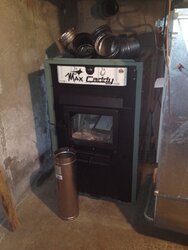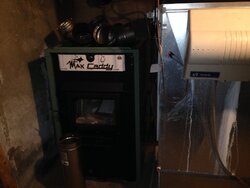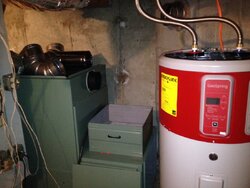So my wood/oil burner Max Caddy arrived today and we put it in place. My question is regarding the thermostat wiring. I have 3 zones that go to a Honeywell control box. When no heat is being called for all zones are open. When a zone calls for heat that zone remains open and the others close. From the Honeywell controller a wire went to the zone valve on the previous hydronic boiler. My questions is, is that the wire that I connect to the Max Caddy oil burner thermostat connection?
Second question, for the wood burner thermostat, I don't want to run more wires to a new thermostat. Can I use a wireless thermostat and connect the receiver into the connection for the wood thermostat? Any recommendations on good wireless ones?
Third question, the setup has an existing A/C coil and blower. Should I just continue to run the A/C in the summer using this setup and not involve the Max Caddy's blower or wiring to control the A/C?
Thanks for any advice you guys can give.
Second question, for the wood burner thermostat, I don't want to run more wires to a new thermostat. Can I use a wireless thermostat and connect the receiver into the connection for the wood thermostat? Any recommendations on good wireless ones?
Third question, the setup has an existing A/C coil and blower. Should I just continue to run the A/C in the summer using this setup and not involve the Max Caddy's blower or wiring to control the A/C?
Thanks for any advice you guys can give.




